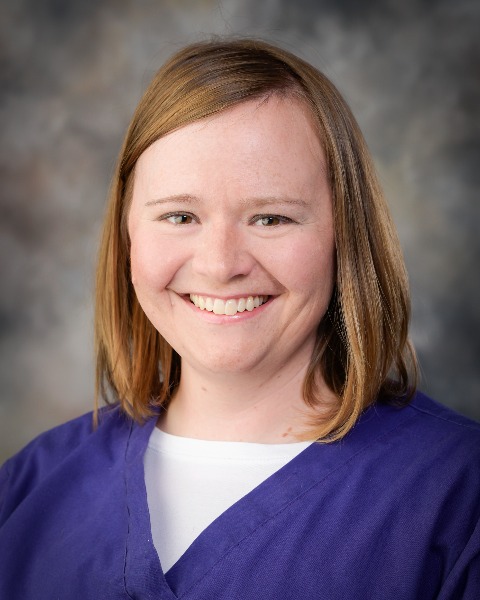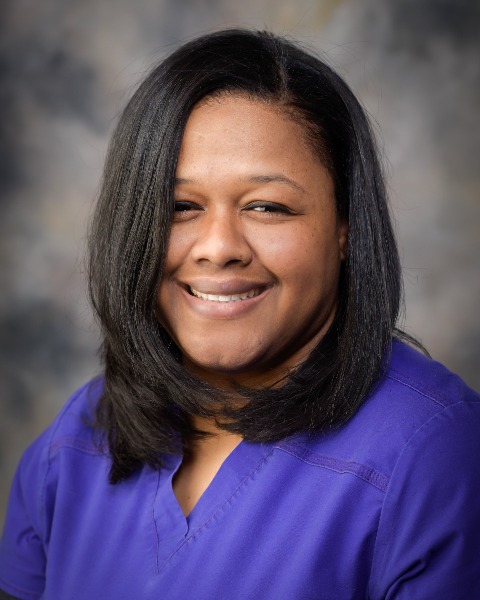Back
QUALITY IMPROVEMENT
Poster Session
(74) Implementation of routine point-of-care liver ultrasound elastography as quality improvement in a multi-disciplinary cystic fibrosis clinic
Thursday, November 3, 2022
12:00 PM – 12:40 PM ET

Katherine Philpott, BSN
RN
Children's Health, United States
Kimberly Hodges, BSN
RN
Children's Health, Texas, United States- DW
David Willcutts, MD
MD
UTSW, United States
Presenting Author(s)
Co-Author(s)
Background: Cystic Fibrosis Liver Disease (CFLD) is on the rise and therefore, more investigation is needed to help understand this disease progress. Some CF clinics are utilizing a point-of-care liver ultrasound elastography machine known as a Fibroscan.
Fibroscan measures both liver stiffness (LS) and controlled attenuation parameter (CAP) scores by sending a vibratory impulse into the right hepatic lobe.
Our Cystic Fibrosis team established a project and implemented various PDSA cycles recently to create a system to complete Fibroscans for all CF patients at least yearly. Specific aim was to obtain 2 Fibroscans per clinic and minimize time spent in-room so as not to disrupt clinic workflow.
Methods: 1. Team members were trained and checked off by Fibroscan instructors.
2. An algorithm for probe selection was created based on provider experience and literature review.
3.Education for patients and parents about Fibroscan was sent out via clinic newsletter. Scripts for the results and standardized reports were made for the medical record. Reports were reviewed by GI physicians and shared with families.
4.To minimize time in-room, a standard protocol for set up, performance, and cleanup was created.
5. PDSA cycles were focused on 2 per clinic day.
Results: The first group chosen were patients with documented elevated liver enzymes and liver disease.
Normal values determined by GI provider team includes:
LS (kPA): < 5.0 – normal, >5-6.2 (borderline), >6.2 (elevated)
CAP score: < 250 – normal
Velocity (m/s): < 1.3
A total of 54 attempts in 12 months were made to obtain Fibroscan. After failing to get 2 per week we increased our goal to four per week. Our final decision was to assign certain clinic days to trained staff, based upon clinic load. Primary staff performing Fibroscan were GI Fellows, Nurses and one medical assistant. Barriers in completing Fibroscans in clinic include: lack of staff, lack of patient cooperation, time constraints and probe size.
We observed that it takes two minutes for the machine to power on and an average of ten minutes to complete the Fibroscan. It was beneficial to perform the Fibroscan as the last task in the clinic visit. Regardless of age, patient cooperation and tolerance influenced the overall time spent in the room. We chose to use the M size probe first for all patients and the S2 size probe for patients with smaller rib spaces. A smart phrase was created to help us track Fibroscan completion and document failures. More than 10 measures were obtained if getting invalid measures, which took more time. Some patients refused to complete Fibroscan after a few measurements, due to intolerance, such as pain and laughter. Some Fibroscan image results were not captured due to machine not fully shutting down prior to unplugging.
Conclusions: Performing Fibroscans in clinic is possible in our multi-disciplinary clinic with the key driver being number of staff with availability to perform scans. Once enough staff was trained and proficient, we were able to perform 4-5 Fibroscans in a clinic half day. Time spent in-room was minimal and did not disrupt workflow and decreased with dedicated staffing from approximately 10 to 7 minutes. With in-room counseling, parents were interested and accepting of this procedure and the number of failures quickly became minimal. Future goals are to maintain annual Fibroscans for all patients in clinic, incorporation of Fibroscan into our CFLD algorithm, and ability to bill for this procedure to add to its sustainability.
Acknowledgements:
References:
Fibroscan measures both liver stiffness (LS) and controlled attenuation parameter (CAP) scores by sending a vibratory impulse into the right hepatic lobe.
Our Cystic Fibrosis team established a project and implemented various PDSA cycles recently to create a system to complete Fibroscans for all CF patients at least yearly. Specific aim was to obtain 2 Fibroscans per clinic and minimize time spent in-room so as not to disrupt clinic workflow.
Methods: 1. Team members were trained and checked off by Fibroscan instructors.
2. An algorithm for probe selection was created based on provider experience and literature review.
3.Education for patients and parents about Fibroscan was sent out via clinic newsletter. Scripts for the results and standardized reports were made for the medical record. Reports were reviewed by GI physicians and shared with families.
4.To minimize time in-room, a standard protocol for set up, performance, and cleanup was created.
5. PDSA cycles were focused on 2 per clinic day.
Results: The first group chosen were patients with documented elevated liver enzymes and liver disease.
Normal values determined by GI provider team includes:
LS (kPA): < 5.0 – normal, >5-6.2 (borderline), >6.2 (elevated)
CAP score: < 250 – normal
Velocity (m/s): < 1.3
A total of 54 attempts in 12 months were made to obtain Fibroscan. After failing to get 2 per week we increased our goal to four per week. Our final decision was to assign certain clinic days to trained staff, based upon clinic load. Primary staff performing Fibroscan were GI Fellows, Nurses and one medical assistant. Barriers in completing Fibroscans in clinic include: lack of staff, lack of patient cooperation, time constraints and probe size.
We observed that it takes two minutes for the machine to power on and an average of ten minutes to complete the Fibroscan. It was beneficial to perform the Fibroscan as the last task in the clinic visit. Regardless of age, patient cooperation and tolerance influenced the overall time spent in the room. We chose to use the M size probe first for all patients and the S2 size probe for patients with smaller rib spaces. A smart phrase was created to help us track Fibroscan completion and document failures. More than 10 measures were obtained if getting invalid measures, which took more time. Some patients refused to complete Fibroscan after a few measurements, due to intolerance, such as pain and laughter. Some Fibroscan image results were not captured due to machine not fully shutting down prior to unplugging.
Conclusions: Performing Fibroscans in clinic is possible in our multi-disciplinary clinic with the key driver being number of staff with availability to perform scans. Once enough staff was trained and proficient, we were able to perform 4-5 Fibroscans in a clinic half day. Time spent in-room was minimal and did not disrupt workflow and decreased with dedicated staffing from approximately 10 to 7 minutes. With in-room counseling, parents were interested and accepting of this procedure and the number of failures quickly became minimal. Future goals are to maintain annual Fibroscans for all patients in clinic, incorporation of Fibroscan into our CFLD algorithm, and ability to bill for this procedure to add to its sustainability.
Acknowledgements:
References:
